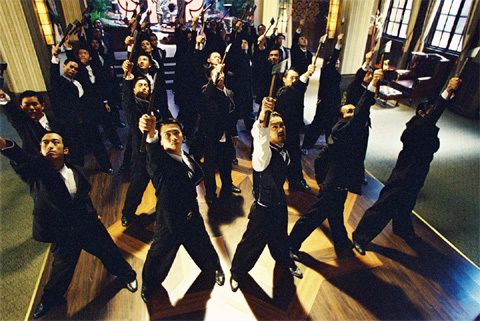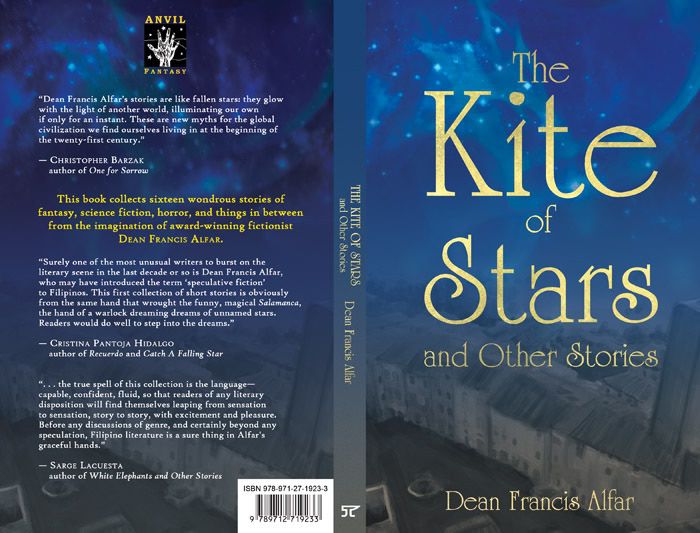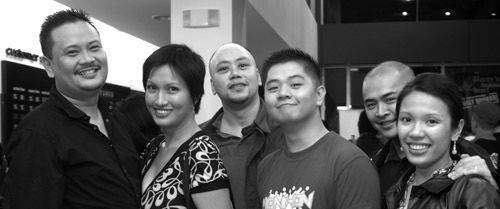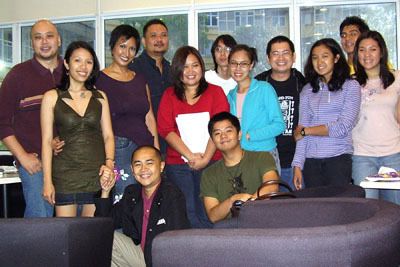Caveat and Part One here.
Part Two here.
I was talking to Sarge Lacuesta the other day, and I told him that interestingly enough I've found myself coming somewhat full circle, now thinking about subject matter and the little details. The more and more I think about this, the more it becomes obvious that I'm teetering towards the prescriptive rather than the descriptive. The problem is I cannot be truly descriptive because the number of texts is not large enough - so I need to speculate. The danger with being prescriptive is - well, in a word, arrogance. How can one person prescribe what should be? That's not just arrogance but also shows a certain short-sightedness. So let me be clear, in case I'm not: these thoughts I'm working out are speculation, with the goal of rationalizing my position on the various matters and issues at hand.
It becomes clear that most, if not all, of my questions cannot be answered in my lifetime - as we need to get to certain volume of quality texts to actually describe what has happened/is happening; because Philippine Speculative Fiction, right now, is still young and growing. A hell of a lot of writing needs to be done, and across the various genres under the spec fic umbrella. That makes it exciting, because all of my opinions could be proven wrong, and PSF can take a truly unanticipated turn and blossom into something I could not foresee or perhaps even dismissed.
(Haha, this sounds like the end of a paper)
A reader emailed me and asked why I'm limiting my posts/analysis to only fantasy, scifi and horror. What about surrealism, magic realism, fabulism, slipstream, etc. ?
Well, the answer is: honestly, I would like to, but let me deal with the "big three" first. I feel even now that my approach (via elements of discourse) is not the best, that I'm leaving out things, but I need to set a foundation of thought first, and this is it. Later, we'll see. For now, let's continue.
C. Philippine Setting + Non-Philippine Characters = Philippine Spec Fic?
What does this mean? What sort of stories come out of this formulation? It's not difficult to imagine. Some early writers, learning by emulation, write very Western characters in a Philippine setting. They learn to write from what they read and majority of what they read (in terms of accessibility, preference, availability) is Western literature. So who can blame them when their texts feature white folk speaking American slang?
Similar to this are texts from writers whose first writing bore fruit as fanfics. While western media provides a lot to speculate on (various properties like Star Wars, Star Trek, Harry Potter and a lot more), the Japanese influence is also strong, with various anime and manga inspiring people to write fanfic. In this case, they learn the cultural mentality of the Japanese characters (because in a fic, while situations and pairings change, it is vital that the characters remain true).
Therefore, in both cases (western and Japanese) the characters, though written by Filipino writers, are not in fact Filipino (because they are established characters). If a fanfic writer transposes the cast of (and I'm betraying my age here, but I did love the series) Ranma1/2 to Manila and had them running around Quiapo and Intramuros, it would be responsibility of the fanfic writer to stay true to the cast of Ranma's characterizations, and at the same time, bring the setting to life.
So while the setting is truly Filipino, the characters are not. So does that make this example of fanfic Filipino (authorship aside, please - we'll deal with that later).
Fanfic aside, why have non-Filipino characters in the first place? The gut/guilt instinct would be to immediately condemn such examples as blatantly non-Filipino. But we need to see where this question is coming from, and why it is asked with such vitriol. It is premised on the notion that to have non-Filipinos as characters is wrong or unacceptable, and that line of reasoning can be traced back to our conditioning - the very conditioning that tells that to do otherwise is to be non-nationalist, to be some sort of race traitor, because every story written by a Filipino must somehow help other Filipinos, or bear the onus of waving the flag.
Is there value to this question? Yes, there is. But we need not approach it, or in fact, answer it, on its terms. We continue to struggle with guilt, and that is what will keep our literature small.
Metaphors aside, some of the many kinds of stories that can be developed under the aegis of speculative fiction WILL have no Filipino characters. For example, a high fantasy text with different imagined races. Or a scifi story of aliens attacking other aliens. Or a horror story about the Thing at the Edge of Darkness. We cannot always impose some Filipino there, simply because our guilt demands it.
On the flipside of the argument, the question is why not? Guilt issues aside, why not have a Filipino?
It will be the author's call, in the end. And we will let each author deal with the issue as that particular author sees fit.
As for setting:
Is setting alone enough to qualify a piece of spec fic as Filipino?
I believe in setting, and I believe that written well-enough, setting actually becomes a character (you can name unforgettable settings in fantasy and scifi, I'm certain, from Lewis' Narnia to Mieville's genre-defying New Crobuzon in Bas Lag; and in real world terms -because a lot of spec fic is set in the 'real world' - you could identify the cities of New York, Tokyo and London).
It would have to be a Philippine setting that is so intrinsically Filipino, so uniquely Filipino that there is no question where in the world it is. But what does this mean? The default, again, would be realism and its tropes: the countryside, the villages, the rice fields, the islands, the jungles, the provincial town square, the church, the shantytowns, the congested Metro Manila and its 17 components, Smokey Mountain, the domestic household and its permutations (nuclear family house, extended clan houses, etc.), and on and on. But if we take time and exhaust the list, is it enough? Is Filipino enough to separate it from similar locales in our neighboring countries? What differentiates our poverty-stricken slums from those in Bangladesh or Indonesia? Our red light districts from those in Thailand? Our rice fields from those in Malaysia?
It becomes apparent that setting is not purely descriptions of the physical environment but is also informed by the social, religious, political and cultural aspects of the place. Place goes beyond buildings and boondocks and bordellos; it involves its inhabitant's mindscapes, its history and context, its memories of the past and future projections.
The Philippines struggles to concretize its identity, and one of the ways it does this is through the literature of its people - and so once again, we find spec fic marching under the banner of general Philippine Literature, because the stories we write also do this, whether consciously or not.
We contribute to how we, as a people, perceive our country, and how other readers perceive us, as a people.
Philippine Setting + Non-Philippine Characters = Philippine Fantasy?
Given the many types of fantasy stories, I would say that more likely than not this permutation could work and some of the end results could be considered Philippine Fantasy.
But.
The thorny question (which we have elaborated on a bit above) is why didn't the author have Filipino characters in the first place? Even if the character is not sufficiently explored or developed, if the reader realizes it’s not Filipino, the question will be asked, and I'm telling you Filipino critics will have a field day. The implication is that we continue to kowtow to the west by using them, their characters, as a default. A white default.
If we valorize the Japanese character, the argument would be the same.
"Why not one of our own?"
Indeed, why not?
Philippine Setting + Non-Philippine Characters = Philippine Scifi?
I honestly do not know what this is, unless we're talking about a Michael Crichtonesque scifi thing with a group international specialists coming to the Philippines to deal with some funky thing. With a pretty Filipina as a guide and/or love interest or something. Haha.
In this permutation, having non-Filipinos as characters is almost, so temptingly, rational. Because "they", not "us", have the scientific know-how and gadgetry and money. Please, no.
It's like those US movies that are shot in location in Manila.
We are not truly part of the story.
Philippine Setting + Non-Philippine Characters = Philippine Horror?
Again, why set it in the Philippines at all if the characters are non-Filipino?
My tired mind imagines Cthulhu rising out of Manila bay, rendering the locals (that's us) mindless gibbering puddles, while the White Specialists (oh so handsome and clever) save us from cosmic horror.
"Oh thank you, kind sirs," we'd say, at least those of us who survived with sanity intact, as we press their white feet to our brown faces in gratitude.
Who is telling this story and why are we the extras?
Next:
D. Non-Philippine Setting + Non-Philippine Characters = Philippine Spec Fic?
E. Filipino author = Philippine Spec Fic?
F. Non-Filipino author = Philippine Spec Fic?
(I am resisting adding more items down here, for now)
Labels: speculative fiction, thinking










